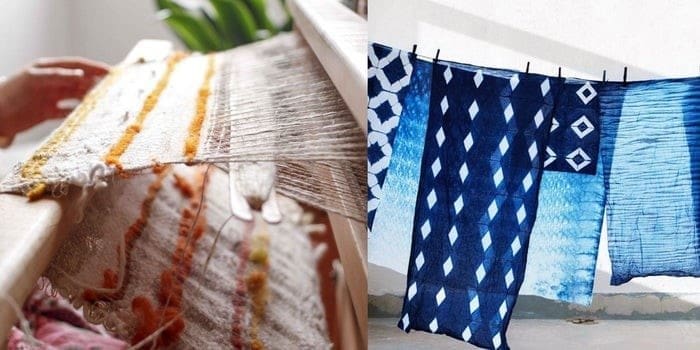Indian’s rich heritage is one thing that makes it unique in several ways. Legacies touch every nook and corner of the country, and there are distinct ones. Be it food, manufacturing or textile. The roots of the culture are engraved so deep, that the entire world takes note.
It goes without saying India has a lot to offer. But it is the Indian textile sector that is creating a wave. India—being one of the largest textile sectors of the world—employs more than 30 million people across cities and states.
Primarily divided between yarn and fiber, the industry contributes about 2.3 per cent to India’s growing gross domestic product and 13 per cent of India’s total export income. It is estimated that the textile sector alone is expected to employ about 55 million skilled workers this year.
The country is brimming with great artisans and brains who have a lot to offer in terms of techniques and fabrics. To know what Indian textile heritage has in store and its making, Entrepreneur India spoke to Akshay Jain, managing partner, Greenways, a 77-year-old traditional and contemporary wear brand.
“India has witnessed a growing demand in textiles in the last 10 years owing to the increased penetration of organized retail players, favorable demographics, and increasing spending capacity. Also, government policies and measures are helping the sector in more ways than one,” said Jain talking about the growth.
One would be surprised that the homegrown textile variety is so vast that almost every state has a specialty hidden in its culture and reflected in its traditional attire.
All one needs to do is take a fabric heritage tour across India to understand the reason behind the growing popularity of India’s textile and fabric.
Ikat from Odisha
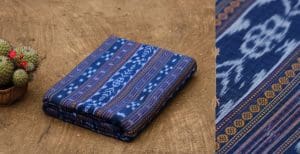
Weaved in several parts of the nation, when it comes to Ikat, Odisha appears to have practically aced the specialty of weaving.
“Ikat weavers mostly belong to Meher or Bhulia origins who have acquired the work of art and have aced the characteristic features. They essentially endeavor to breathe life into the rich Oriya culture in their Ikats with their extraordinary coloring procedures,” said Jain.
Kalamkari from Andhra Pradesh

Kalamkari is a sort of hand-painted or block-painted material craftsmanship that goes back to the Indus Valley Civilisation. With a background marked by 3,000 years, Kalamkari is known to have developed during the Mughal period and has figured out how to hold its elegance to date.
“Today as we watch Kalamkari make a contemporary style explanation with regular planners, we think we owe it to the gifted craftsmen of Venkatagiri, Pochampally and Gadwal that keep on making customary and contemporary pieces decorated with Kalamkari prints,” he said.
Bandhani or Tie and Dye from Gujarat
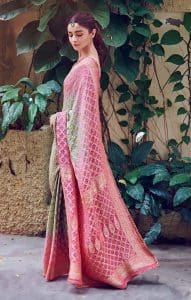
Tie and color or bandhani is a subsidiary of the Sanskrit word bandh which signifies ‘to tie’ and is one of the most mainstream material crafts of India. Considering they originate from one of the most socially rich states Gujarat and Rajasthan, bandhani in its full magnificence is an explosion of energetic hues and glasswork.
But how do you know what an original bandhani looks like? “The real bandhani includes square or round themes that are a result of the color—the more mind-boggling your tie and color the more genuine your bandhani. Like most conventional textures, while apparatus may have expanded creation, genuine tie and color stay local to the specialists and their ability alone,” explains Jain.
Patan Patola from Gujarat

Made in unadulterated silk, Patola saris are a definitive appearance of the weaving ability that the craftsmen of Gujarat have accomplished more than a few centuries ago. The making of Patola is a real task.
Explaining the process, he said, “In the Patan town of Gujarat, this silk material with two-fold Ikat designs is enlivened as weavers work perseveringly for more than five months to weave one Patola saree. The complex weaving and dying strategies add to the true exclusiveness of the texture.”
Zari work from Madhya Pradesh
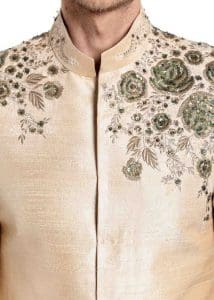
The urban areas of Bhopal, Gwalior and Indore are known for the complex Zari work which was belittled by the Mughal Emperors more than 300 hundred years ago.
“Keeping that in mind, Zari is a brocade of tinsel strings implied for embroidery and weaving when it is woven into the texture (for the most part silk) to make different examples, it makes the texture its own,” he said.
Brocades from Uttar Pradesh

Banarasi sarees are one of India’s most valuable material artistic expressions and wearing one resembles wearing a bit of workmanship. The weavers of Varanasi are out and out craftsmen themselves as they weave with fine gold and silver metallic strings to make extraordinary fragile brocades.
Jain highlighted how this heritage style and great weaving method has not just figured out how to continue itself during that time, but has managed to come back in fashion for its sheer flawlessness and excellence.
Kanjeevaram from Tamil Nadu
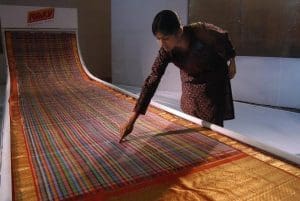
The underlying foundations of Kanjeevaram sarees follow back to the town of Kanchi or Kanchipuram of Tamil Nadu and are known for their lovely pallus that are loaded down with Zari work.
It’s the making process that’s quite interesting to know. “These sarees are so detailed in loftiness that they take anything between 10 to 20 days, even half-a-year on occasions to be woven,” he said.
Other than the rich fabric, India’s way of creating patterns and decorating textiles is known globally. With a wide variety of plant fibres, indigenous weavers, painters, dyers and expert craftsmanship, one could justify the influence of India on the world’s textile production. Some techniques that are loved across the world are:
Block Printing
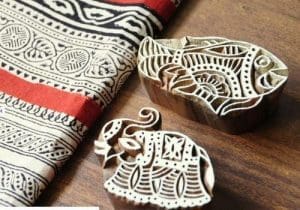
A basic advance in the block printing procedure happens before materials are included. The cutting of a printing square is a profoundly gifted work on, requiring a group of craftspeople having some expertise in various phases of the procedure.
Indigo Dyeing

Found in the leaves of bushes in the Indigofera family, indigo color has been utilized for centuries in many locales of India. “It’s used in shading yarn and texture (particularly cotton) in shades of blue. Indigo is a substantive color that expects skill to be made and used,” he said.
Weaving
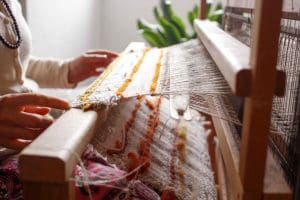
Rajasthan Khadi Sangh is a weaving segment in Kala Dera, Rajasthan.
“The cotton is spun and woven by hand utilizing customary devices and hardware to make cotton khadi fabric. Carefully assembled materials are as noteworthy pieces of the Indian economy, giving work to millions,” he said.
Ari Embroidery

The embroiderers at the Sankalan weaving structure and creation house in Jaipur, Rajasthan, practice an assortment of methods to adorn textures by hand.
Cotton Cultivation

Cotton development in India date back as much as 9,000 years and still has a necessary part to play in the Indian economy.
“Today, India, Pakistan and Bangladesh together develop enough cotton yearly to furnish each individual on the planet with more than one kilogram each. The generation of this significant common asset has consistently depended on the expertise and work of individual ranchers,” said Jain.
Though we are out everywhere making a mark, Jain who has seen the industry evolve feels that the handloom industry needs to re-orient itself for meeting the difficulties being presented by recent financial, social and innovative changes.
“Endeavors are required to create top-notch handloom textures as indicated by contemporary buyer inclinations, and to guarantee sensible wages with the goal that more youngsters select this occupation,” he said.
Also, to advance this industry on an economical premise, it is considered important to create quality textures with a plan for winning the trust and certainty of the buyer.

